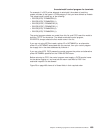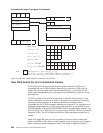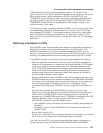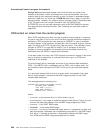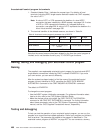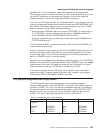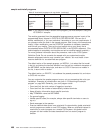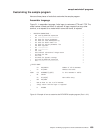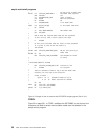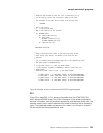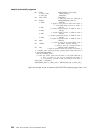
1. Standard Header. Byte 1 indicates the request type. For deletion of local
terminals (including APPC single-session devices installed via CINIT requests)
the value is X'F1'.
Note: A value of X'F5' or X'F6' represents the deletion of a local APPC
connection that was installed by a BIND request—see page 519. A value
of X'FA' or X'FB' represents the deletion of a shipped terminal or
connection—see page 528. A value of X'FC' represents the deletion of a
client virtual terminal—see page 536.
2. The terminal identifier of the deleted resource, as shown in Table 24.
Table 24. Autoinstall control program’s parameter list at DELETE
1st byte 2nd byte 3rd byte 4th byte
First fullword "F1" "Z" "C" Reserved
Second fullword ID of terminal to be deleted
Third fullword Length of netname to be
deleted
First two bytes of netname
Next 15 bytes Remainder of netname
Note that the named resource has been deleted by the time the control program is
invoked, and is not therefore found by any TC LOCATE type functions.
Naming, testing, and debugging your autoinstall control program
Naming
The supplied, user-replaceable autoinstall control program for terminals and APPC
single-session connections initiated by CINIT is named DFHZATDX. If you write
your own version, you can name it differently.
After the system has been loaded, to find the name of the autoinstall control
program currently identified to CICS, use either the EXEC CICS INQUIRE
AUTOINSTALL command or the CEMT INQUIRE AUTOINSTALL command.
The default is DFHZATDX.
To change the current program:
v Use the AIEXIT system initialization parameter. For guidance information about
how to do this, refer to the
CICS System Definition Guide
.
v Make the change online using either the EXEC CICS SET AUTOINSTALL
command or the CEMT SET AUTOINSTALL command. For further information
about these commands, refer to the
CICS System Programming Reference
manual, and the
CICS Supplied Transactions
manual, respectively.
Testing and debugging
To help you test the operation of your autoinstall control program, you can run the
program as a normal terminal-related application. Define your program and initiate it
from a terminal. The parameter list passed to the program is described in “The
autoinstall control program at INSTALL” on page 487. You can construct a dummy
the autoinstall control program for terminals
496
CICS TS for OS/390: CICS Customization Guide




